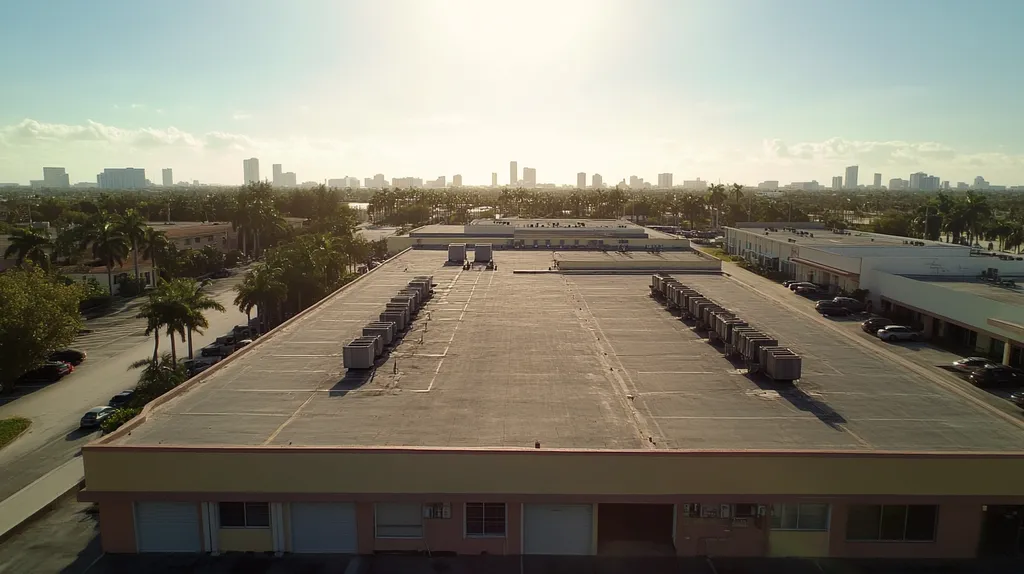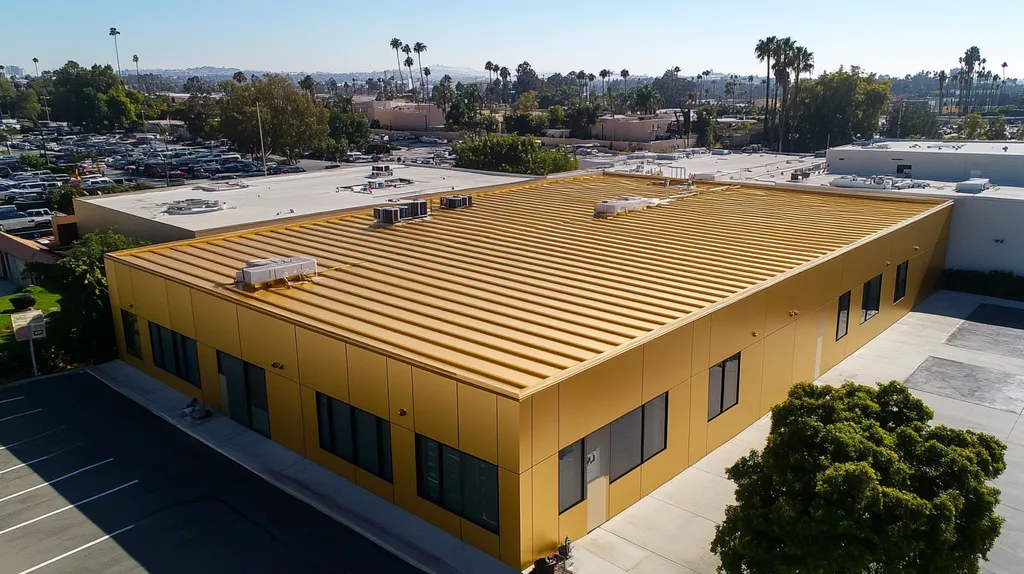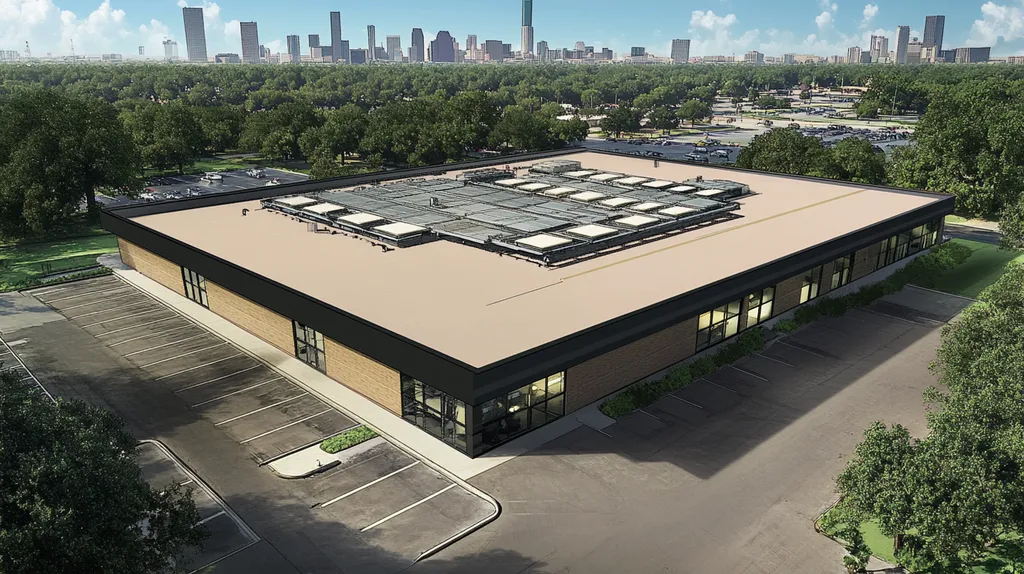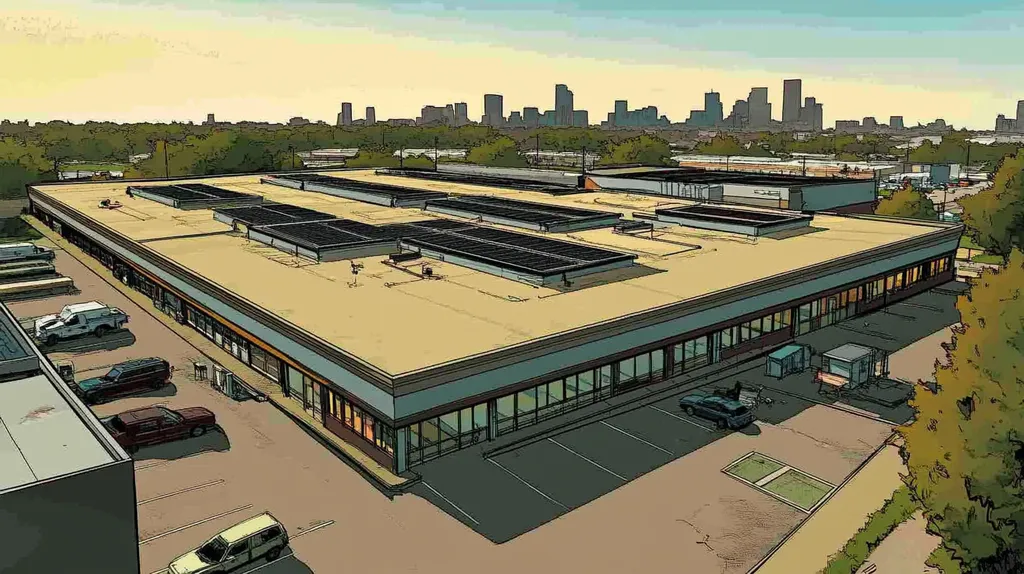Welcome to today’s Battle Royale featuring two roofing heavyweights: “TPO” in the east corner versus “PVC” in the west!
Tonight’s showdown pits these contenders against each other across six punishing rounds designed to test every aspect of their performance for Summer Sun Effect on Curing Times for Commercial Roofs.
At stake? Millions in potential costs, decades of building protection, and the critical performance demands of modern commercial and industrial facilities.
Our professional judging panel will evaluate each round on technical merit, real-world performance, and value delivery. After all six rounds, we’ll declare our ultimate champion.
Ladies and gentlemen, facility managers and building owners… it’s time to rumble!
ROUND 1: INITIAL COSTS & INSTALLATION
When summer temperatures soar, the choice between TPO and PVC roofing becomes particularly critical for commercial properties. The intense heat affects not just installation logistics but also material behavior and project timelines. Making the wrong choice can lead to extended disruptions, increased costs, and potentially compromised roofing performance.
Material Expenses
Summer’s predictable weather patterns make it an ideal time for roofing projects, but material selection significantly impacts both immediate and long-term costs. TPO materials typically cost 30% less than PVC, making them an attractive option for budget-conscious property owners.
PVC materials command premium pricing due to their enhanced chemical resistance and superior durability. However, their higher cost includes better UV resistance and improved heat reflection properties, which can reduce cooling costs during intense summer months.
Summer weather provides optimal conditions for roofing work, with stable temperatures helping materials cure properly and minimized rain delays ensuring project efficiency. (source: Rodd Roofing)
When comparing pure material costs, TPO holds a clear ADVANTAGE in this category.
Installation Complexity
The complexity of installation directly affects labor costs and project duration. TPO’s lighter weight and greater flexibility make it easier to handle and position, particularly important during hot summer days when worker fatigue is a concern.
PVC installation requires more specialized equipment and expertise, particularly for proper heat welding of seams. The additional complexity can extend installation time by 20-30% compared to TPO, especially during peak summer temperatures.
The precision required for PVC installation often means higher labor costs and the need for more experienced installers. However, this attention to detail can result in better long-term performance.
For installation complexity, TPO demonstrates an ADVANTAGE due to its simpler installation process.
Project Timeline
Project duration affects both direct costs and business disruption. TPO installations typically complete 25% faster than PVC projects, allowing businesses to resume normal operations sooner.
PVC installations require more precise temperature control during installation and longer curing times. This can extend project timelines, particularly when summer heat requires work schedules to be adjusted to cooler morning hours.
The additional time required for proper PVC installation can increase overall project costs through extended labor hours and longer facility disruption.
Regarding project timeline efficiency, TPO claims another clear ADVANTAGE.
ROUND 1 WINNER: TPO
ROUND 2: DURABILITY & LIFESPAN
When summer temperatures climb above 90°F, commercial roofing materials face their ultimate stress test. The relentless heat and UV exposure can accelerate aging, potentially reducing a roof’s lifespan by 20-30% if the wrong material is selected. For facility managers, understanding how these materials perform under extreme conditions isn’t just about maintenance – it’s about protecting their significant investment.
Durability Under UV Exposure
UV radiation represents one of the most aggressive enemies of roofing materials, particularly during peak summer months. The constant bombardment of UV rays can break down chemical bonds, leading to material degradation and eventual failure.
TPO roofing incorporates UV-resistant compounds that provide good protection against solar radiation. However, the effectiveness of these compounds can vary significantly between manufacturers, and some TPO formulations have shown inconsistent performance over time.
PVC roofing demonstrates superior UV resistance thanks to its inherent chemical structure and advanced stabilizers. Its proven track record spans decades, with minimal degradation even in extreme solar exposure conditions.
For UV durability performance, PVC claims the ADVANTAGE.
Impact of Heat on Lifespan
High temperatures create unique challenges for roofing materials, affecting everything from dimensional stability to seam integrity. Understanding heat impact is crucial for predicting long-term performance.
TPO materials can maintain stability up to 160°F but may experience accelerated aging when consistently exposed to extreme temperatures. This can lead to premature cracking and potential seam failures in particularly hot climates.
PVC roofing maintains its structural integrity even under sustained high temperatures, thanks to its higher melting point and superior heat stability. Its molecular structure resists thermal breakdown more effectively than TPO.
When considering heat impact on lifespan, PVC demonstrates a clear ADVANTAGE.
Resistance to Physical Damage
Commercial roofs must withstand various forms of physical stress, from maintenance traffic to falling debris. The ability to resist punctures and tears directly impacts maintenance costs and overall lifespan.
TPO membranes offer good basic puncture resistance and can handle moderate foot traffic. Their flexibility helps absorb impacts, though thicker membranes are often required for high-traffic areas.
PVC membranes typically demonstrate superior tear and puncture resistance, especially in areas with frequent maintenance access. Their naturally rigid composition provides better protection against physical damage without requiring additional thickness.
For physical damage resistance, PVC takes the ADVANTAGE.
ROUND 2 WINNER: PVC
ROUND 3: PERFORMANCE FACTORS
As summer temperatures climb past 95°F, the curing process of commercial roofing materials becomes increasingly critical. Improper curing can lead to premature failure, costly repairs, and potential structural damage that could have been avoided. Property owners must understand how extreme heat affects different roofing materials to make informed decisions that protect their investment.
Temperature Sensitivity
Summer heat poses unique challenges for roofing materials, with surface temperatures often exceeding 160°F. These extreme conditions can dramatically affect how materials cure and perform, making material selection crucial for long-term success.
TPO membranes cure rapidly in high temperatures, typically achieving initial set within 4-6 hours. However, this quick curing can be problematic if temperatures exceed recommended ranges, potentially leading to surface defects and weakened seams.
PVC membranes demonstrate superior stability during high-temperature curing, maintaining consistent performance even when surface temperatures spike. Their chemical composition allows for more predictable curing behavior and better thermal stability throughout the process.
For temperature sensitivity performance, PVC claims the ADVANTAGE.
Installation Timing Flexibility
The ability to work within specific time windows becomes crucial during summer installations. Proper timing can mean the difference between optimal curing and compromised performance.
TPO installations offer greater scheduling flexibility due to their rapid curing time. This quick-set characteristic allows work to be completed during shorter weather windows and helps minimize disruption to building operations.
PVC requires more precise timing and longer curing periods, which can limit installation windows. While this might seem disadvantageous, it actually ensures better quality control and more consistent results.
Given its adaptability to varied installation schedules, TPO takes the ADVANTAGE in this category.
Adhesion and Longevity
The quality of adhesion during initial curing significantly impacts a roof’s long-term performance. Poor adhesion can lead to separation, leaks, and premature failure, particularly in high-heat environments.
TPO membranes create strong initial bonds but can experience adhesion challenges in extreme heat. The accelerated curing process may result in inconsistent bonding strength across the roof surface.
PVC systems demonstrate exceptional adhesion properties even under intense summer conditions. Their molecular structure creates stronger, more reliable bonds that maintain integrity despite thermal cycling and UV exposure.
In terms of adhesion quality and long-term performance, PVC earns the ADVANTAGE.
ROUND 3 WINNER: PVC
ROUND 4: MAINTENANCE REQUIREMENTS
When summer temperatures soar above 95°F, maintenance requirements for commercial roofing systems become critically important. Poor maintenance practices during peak heat can reduce a roof’s lifespan by up to 40% and triple emergency repair costs. Understanding how different roofing materials respond to intense UV exposure and heat cycling isn’t just about reducing maintenance costs – it’s about protecting a significant capital investment.
Routine Inspection Requirements
Regular inspections become especially crucial during summer months when extreme heat can accelerate wear patterns and reveal installation defects. The frequency and depth of these inspections directly impact long-term performance and maintenance costs.
TPO roofing systems require quarterly inspections during the first year, particularly around seams and flashings where heat stress can cause separation. After the initial year, bi-annual inspections are typically sufficient if no issues are detected.
PVC roofing typically needs only annual inspections after the first year, thanks to its superior heat resistance and more durable seam welds. The material’s inherent stability under high temperatures results in fewer stress-related issues requiring attention.
For routine inspection requirements, PVC claims the ADVANTAGE.
Cleaning and Preventive Care
Proper cleaning and preventive maintenance help maximize roof performance and longevity. The intensity of summer sun exposure can accelerate the buildup of harmful deposits and increase the importance of regular care.
TPO membranes require quarterly cleaning to prevent dirt accumulation that can trap moisture and accelerate degradation. These roofs also need more frequent reapplication of protective coatings, especially in high-UV environments.
PVC roofing needs only semi-annual cleaning due to its natural resistance to dirt accumulation and chemical exposure. Its superior UV resistance eliminates the need for additional protective coatings, significantly reducing maintenance requirements.
In terms of cleaning and preventive care, PVC demonstrates another clear ADVANTAGE.
Repair Frequency and Costs
The frequency and complexity of repairs directly affect both maintenance budgets and facility operations. Understanding typical repair patterns helps property managers plan and budget effectively.
TPO roofs often require more frequent repairs, particularly around seams and penetrations where summer heat stress can cause separation. The average TPO roof needs attention every 3-4 years for minor repairs and more extensive maintenance every 7-8 years.
PVC roofing systems typically need repairs half as often as TPO, with major maintenance usually unnecessary until years 12-15. Their superior heat resistance and stronger seam welds result in fewer stress-related failures.
For repair frequency and associated costs, PVC takes the ADVANTAGE.
ROUND 4 WINNER: PVC
ROUND 5: SUSTAINABILITY CREDENTIALS
The environmental impact of commercial roofing has never been more critical, with rising global temperatures pushing building sustainability to the forefront. Poor material choices can increase a building’s carbon footprint by up to 40% and substantially raise cooling costs. Understanding how TPO and PVC roofing materials contribute to environmental goals has become essential for property owners looking to balance performance with planetary responsibility.
Material Longevity and Environmental Impact
TPO membranes utilize eco-friendly manufacturing processes that produce minimal harmful byproducts. Their production requires less energy than PVC, resulting in a smaller carbon footprint during manufacturing.
The manufacturing of PVC roofing generates chlorine-based byproducts and requires more energy-intensive processes. However, PVC’s superior durability means fewer replacement cycles over time, potentially offsetting its initial environmental impact.
While both materials have environmental tradeoffs, TPO’s cleaner production process earns it the ADVANTAGE in this category.
Energy Efficiency and Heat Management
Modern TPO membranes achieve impressive solar reflectance rates above 85%, significantly reducing cooling loads during peak summer months. Their white surface maintains reflectivity longer than most alternatives, helping buildings maintain energy efficiency over time.
PVC roofing also offers excellent reflective properties but typically requires more frequent cleaning to maintain optimal performance. The material’s higher thermal mass can actually help moderate temperature swings, reducing HVAC cycling.
Given their superior long-term reflective properties and lower maintenance requirements, TPO claims the ADVANTAGE.
Recyclability and Waste Reduction
TPO membranes can be fully recycled at the end of their service life, with manufacturers operating established recycling programs. The material can be processed into new roofing products without significant quality loss.
While PVC is technically recyclable, the process is more complex and expensive due to its chemical composition. Many PVC roofs still end up in landfills despite recycling capabilities.
For waste reduction and recycling potential, TPO demonstrates a clear ADVANTAGE.
ROUND 5 WINNER: TPO
ROUND 6: SPECIALIZED APPLICATIONS
When summer temperatures exceed 95°F, commercial roofing materials face extraordinary challenges during installation and curing. Poor material selection or rushed installations can lead to premature failures, with repair costs often reaching $15-20 per square foot. Understanding how TPO and PVC perform under intense heat conditions becomes crucial for protecting both immediate and long-term investments.
Temperature Vulnerability
Heat buildup on commercial roofs during summer installation can reach surface temperatures exceeding 175°F, creating significant challenges for material stability and proper curing. These extreme conditions test the limits of roofing materials’ molecular structure and installation techniques.
TPO membranes become increasingly pliable above 160°F, which can complicate installation and potentially compromise seam integrity. This softening effect requires careful timing of installation work and may necessitate additional cooling measures.
PVC maintains its dimensional stability even at elevated temperatures, allowing for more predictable installation conditions. Its superior heat resistance means installations can proceed safely during longer daylight hours without risking material integrity.
For temperature vulnerability performance, PVC claims the ADVANTAGE.
Weathering Resistance
The intense summer sun can accelerate aging and deterioration of roofing materials through UV exposure and heat cycling. Proper material selection becomes crucial for maintaining long-term performance under these conditions.
TPO systems show varying degrees of weathering resistance, with some formulations experiencing accelerated deterioration under intense UV exposure. Heat buildup can lead to moisture accumulation and eventual structural issues, particularly around seams and transitions. (source: Mid Atlantic Roofing Systems)
PVC demonstrates exceptional resistance to UV degradation and maintains its protective properties even after years of exposure. Its chemical composition provides inherent protection against heat-related damage and moisture infiltration.
For weathering resistance, PVC takes the ADVANTAGE.
Curing Speed and Installation Flow
Installation efficiency during summer months depends heavily on how quickly materials can properly cure and achieve full strength. The timing of this process affects both project schedules and overall installation quality.
TPO requires careful monitoring of ambient conditions during installation, as excessive heat can accelerate curing before proper positioning and seaming are complete. This can lead to additional quality control measures and slower overall progress.
PVC exhibits more predictable curing behavior in high temperatures, allowing for better project planning and execution. Its consistent performance means fewer weather-related delays and more reliable installation scheduling.
For curing speed and installation flow, PVC earns the ADVANTAGE.
ROUND 6 WINNER: PVC
AND THE WINNER IS…
After six grueling rounds of technical competition, with millions in property investment hanging in the balance, we have our verdict!
In a decisive 4-2 victory, PVC claims the championship belt as the superior summer roofing contender! PVC dominated the critical categories of durability, performance, maintenance, and specialized applications, showcasing exceptional heat resistance, superior UV protection, and unmatched long-term reliability.
But don’t count TPO out completely! This scrappy challenger proved its worth by winning both the cost efficiency and sustainability rounds. For budget-conscious projects in moderate climates, TPO remains a worthy contender.
Important Notice: While this analysis reflects general performance characteristics, every building presents unique challenges. Local climate conditions, structural requirements, and specific property characteristics can significantly impact material performance. Property owners should always consult with qualified roofing professionals who can evaluate their specific situation and recommend the most appropriate solution.
Ladies and gentlemen, in the high-stakes arena of commercial roofing, there’s no substitute for informed decision-making. Choose your champion wisely – because when summer temperatures soar above 95°F, you need a proven performer in your corner!
FREQUENTLY ASKED QUESTIONS
Q. What are the initial costs of a commercial roof using TPO or PVC?
A. TPO materials typically cost about 30% less than PVC. While TPO is budget-friendly, PVC offers enhanced durability and UV resistance, potentially saving on long-term cooling costs. The initial savings with TPO can help offset installation complexities and ensure the best decision for your commercial property.
Q. How do TPO and PVC perform regarding a commercial roof’s durability and lifespan?
A. PVC generally outperforms TPO in durability, particularly against UV exposure, leading to a longer lifespan. While TPO may experience degradation under the sun, PVC maintains its structural integrity and offers proven longevity, making it a more reliable choice for commercial roofing. Assessing these factors can help you protect your investment.
Q. What is the effect of extreme heat on curing times for a commercial roof?
A. High summer temperatures can accelerate curing times for TPO, but excessive heat can lead to surface defects. PVC, however, maintains better temperature stability and curing consistency, which ensures a dependable installation process. This understanding is crucial for safeguarding your roof’s performance in hot weather.
Q. How often should I conduct maintenance on a commercial roof made of TPO or PVC?
A. TPO roofs typically need quarterly inspections in the first year and bi-annual afterwards. Alternatively, PVC roofing generally only requires annual inspections due to its superior durability. Not only do these inspections help identify issues early, but they also contribute to the roof’s overall longevity and reduced maintenance costs.
Q. Which roofing material is more sustainable for my commercial roof?
A. TPO has a cleaner production process, contributing to a smaller carbon footprint. While PVC offers durability, its manufacturing is energy-intensive and produces harmful byproducts. In contrast, TPO stands out as the more eco-friendly choice, making it suitable for property owners who prioritize sustainability in their commercial roof selection.
Q. How do TPO and PVC differ in specialized applications during summer?
A. PVC excels in temperature vulnerability, maintaining integrity during high summer heat. In contrast, TPO can become pliable in extreme temperatures, risking installation quality. Understanding these differences ensures that your choice of material can handle summer conditions, thereby enhancing both performance and longevity for your commercial roof.
Q. What are the repair costs associated with TPO compared to a PVC commercial roof?
A. TPO roofs often require repairs every 3-4 years, while PVC typically needs repairs only around every 12-15 years, saving on long-term maintenance expenses. The reduced frequency of repairs with PVC translates to lower overall repair costs over your roof’s lifespan, making it a financially savvy choice for facility managers.











